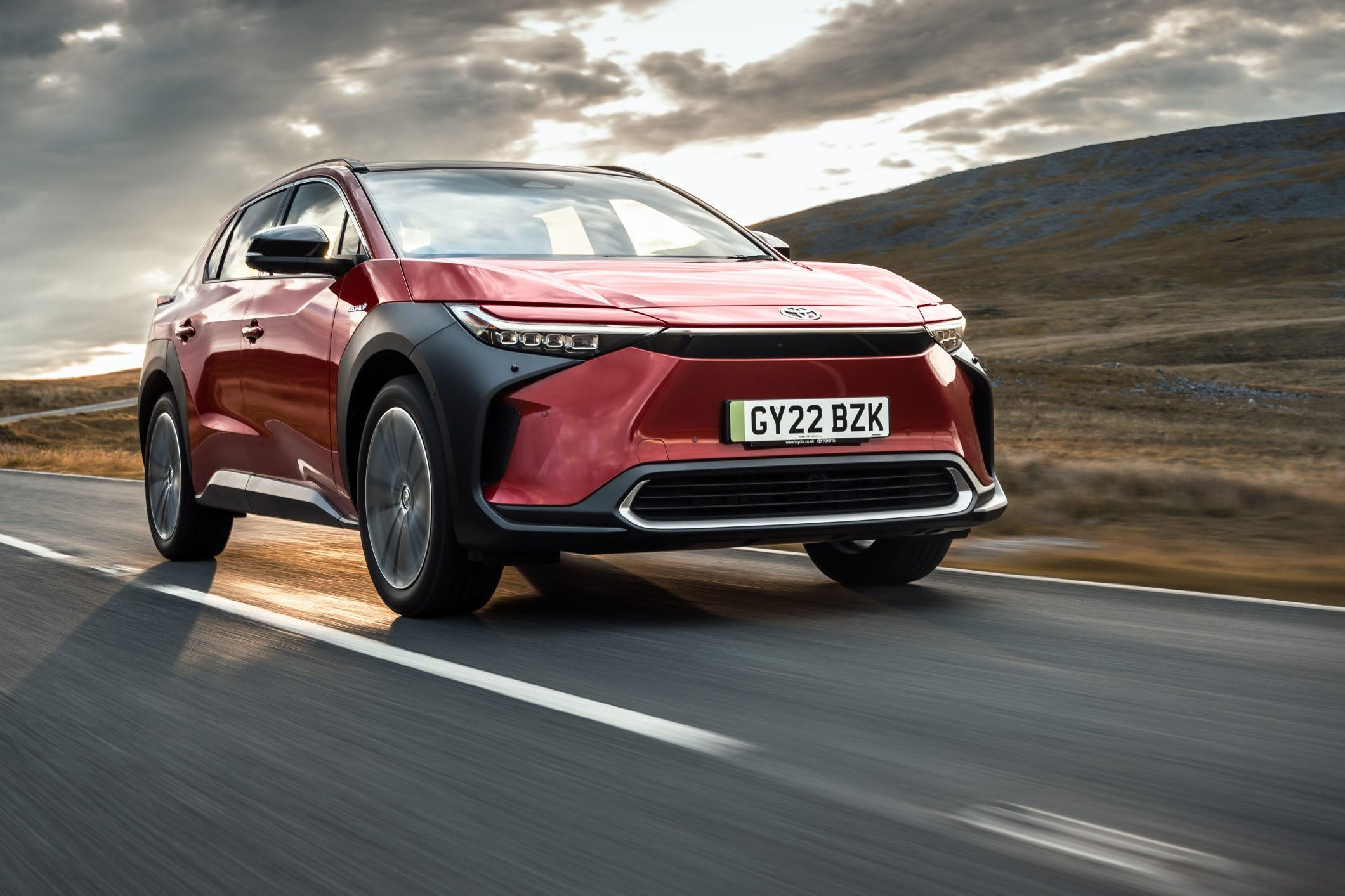Toyota bZ4X Review 2025: Price, specs & boot space
Written by Richard Aucock
Quick overview
Pros
- Modern exterior design
- Potential for 150kW rapid charging
- Genuine off-road ability in AWD versions
Cons
- Cold-weather battery range comes with a question mark
- Boot space could be better
- Interior quality is disappointing in places
Verdict: Is the Toyota bZ4X a good car?
“Toyota has taken a long time to launch a pure electric car. As a first effort, the bZ4X is certainly unusual, but there are some question marks surrounding it.”
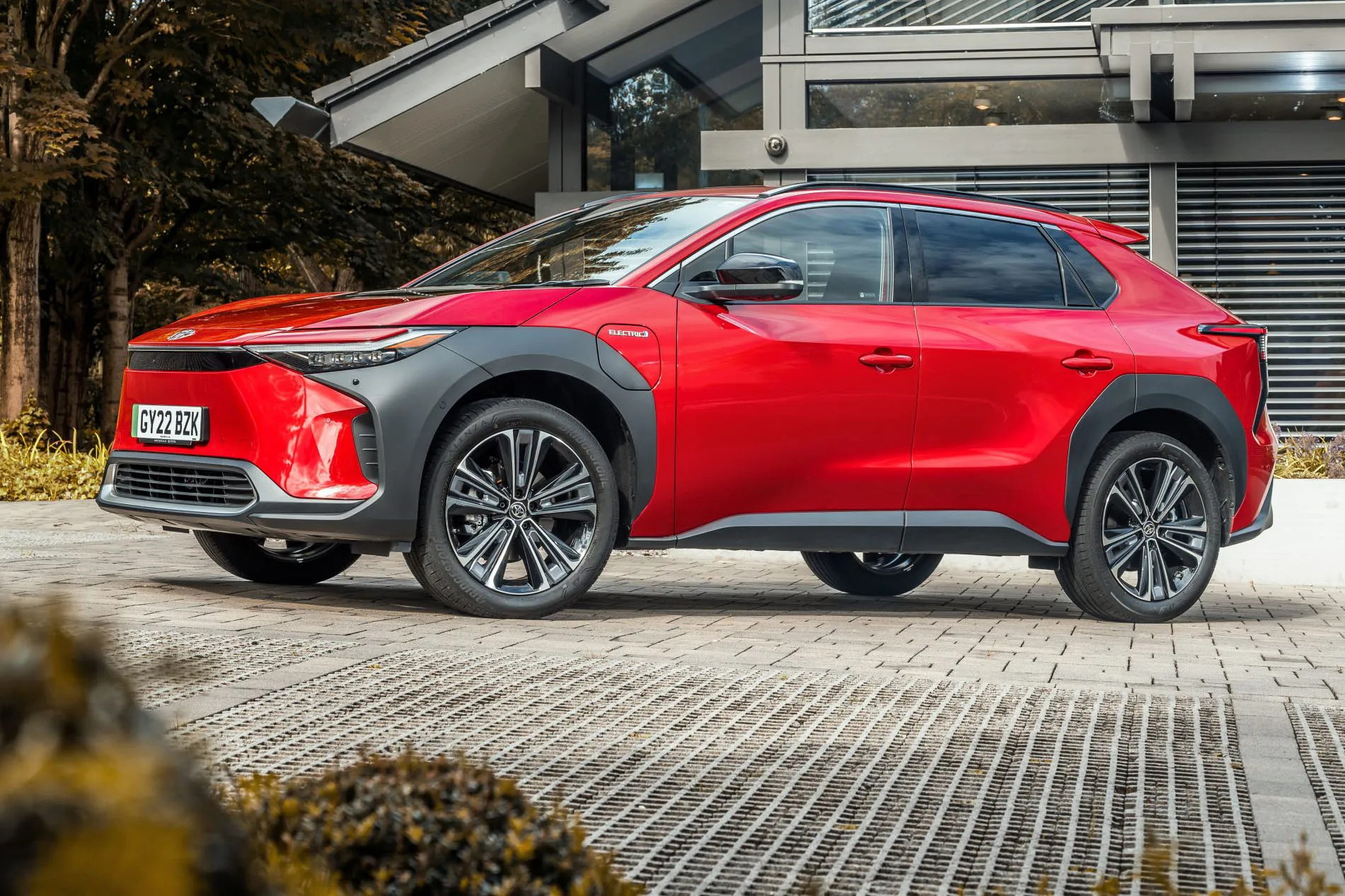
Toyota has been reluctant to embrace the idea of battery electric cars and SUVs, favouring the use of hybrid drivetrains instead. But changing market forces mean Toyota could not resist EVs forever.
A partnership with Subaru has been the force behind the creation of the Toyota bZ4X. Its new e-TNGA platform is shared with the Subaru Solterra, as is the choice of two powertrain options, both powered by a 71.4kWh battery. Buyers can pick from either front- or all-wheel drive, with the latter model offering genuine off-road ability.
On paper, the Toyota bZ4X has the ability to cover up to 318 miles when fully charged. Some testers have seen the predicted range shrink rapidly in cold weather, however, due to an artificial buffer intended to protect the battery. Toyota has since made changes to the bZ4X, which should see a more realistic range shown whatever the conditions.
The inside of the bZ4X is spacious for passengers, a little tighter for luggage, and is packed with features throughout the model range. Some of the interior components feel a little flimsy, but the overall impression is a solid one.
Given Toyota’s experience with producing hybrid-powered cars and SUVs, it is perhaps surprising that the company took such a leftfield route when creating the bZ4X. The partnership with Subaru will undoubtedly have influenced this to a degree, but the bZ4X certainly stands out in a conservative Toyota range.
It is not perfect, with below-par interior quality in places, plus a boot that is not as useful as those of key rivals. Those concerns about the cold-weather range are hard to shake, too.
That said, the Toyota bZ4X still delivers an impressive driving experience, comes with plenty of equipment, and will certainly ensure your neighbours know you are embracing the future.
Looking for a used car for sale? We've got 100s of Toyota Approved Used Cars for Sale for you to choose from, including a wide range of Toyota bZ4x cars for sale.
Is the Toyota bZ4X right for you?
In a world that can feel increasingly homogenous, the Toyota bZ4X is a radical offering from a usually conservative car company. Pushing boundaries in design, both inside and out, the bZ4X is certainly an intriguing alternative to regular electric SUVs.
There is also the added bonus of all-wheel-drive versions of the bZ4X offering real off-road ability, something many of its fancier rivals cannot deliver.
If you want an electric SUV with a dash of futuristic quirkiness, the bZ4X might be for you.
What's the best Toyota bZ4X model/engine to choose?
Toyota has given the bZ4X a relatively generous standard specification, meaning there is no need to venture too far up into the trim levels.
As such, the middle option in the range, Motion spec, is perhaps the best bet. It has more tech than the entry-level Pure version, and ditches the basic 8.0-inch infotainment screen for a larger 12.3-inch item.
Wireless smartphone charging, a surround-view camera and parking sensors are other key upgrades applied to the Motion version.
Unless you are likely to make use of the bZ4X’s all-wheel-drive option, sticking with the regular front-wheel-drive layout makes sense. It will save you money, increase the official battery range and only have a minor impact on outright performance and acceleration.
If you live somewhere remote, the AWD powertrain is easy to recommend. The 160kW setup does bring a touch more power, with the extra traction of all-wheel drive included.
What other cars are similar to the Toyota bZ4X?
The electric SUV market continues to grow, with the Toyota bZ4X just one of a growing roster of options. Key rivals include the Skoda Enyaq iV, Kia EV6 and Hyundai Ioniq 5.
Look further afield and you could consider alternatives such as the Ford Mustang Mach-E, Volkswagen ID.4 and Tesla Model Y.
The most obvious similarity is with the Subaru Solterra, of course, which the bZ4X shares its platform and powertrain with. The two cars look broadly similar, too.
Comfort and design: Toyota bZ4X interior
“For a Toyota, the interior of the bZ4X is something of a radical departure, embracing an open and airy design layout.”
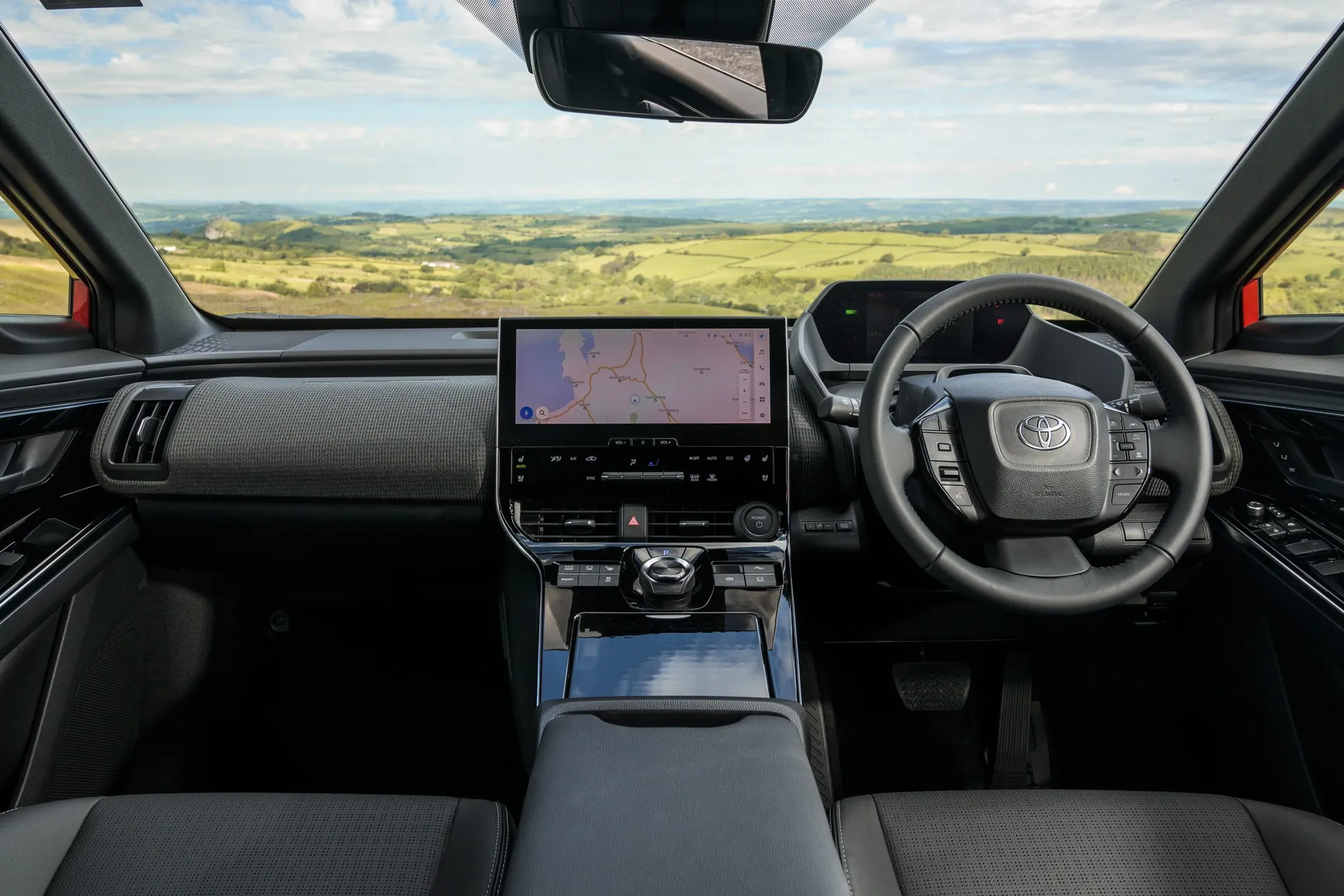
Toyota has focused on making its electric SUV feel bright and spacious inside. This even includes ditching the glovebox, which seems perhaps a step too far.
The seats in all versions of the bZ4X are firm but supportive, and come with plenty of adjustment. There is a raised driving position, aiding forward visibility, but the view out of the back is limited due to the curving roofline. At least there is a standard reversing camera to help when parking.
The seating position and design layout of the bZ4X is a little unusual, with a small steering wheel and high-mounted digital dashboard. Similar to the setup seen in modern Peugeots, the steering wheel of the bZ4X can end up blocking your view of the instrument panel.
This does depend on your personal seating position, but it will be an obvious frustration if it affects you. A planned Tesla-style yoke steering wheel may fix this issue in the future.
Quality and finish
Toyota interiors have typically been solid but uninspiring affairs. For the bZ4X, the Japanese brand has made some interesting design choices, including a large slab of piano black trim on the centre console.
Although the shiny black trim may be a magnet for fingermarks, it does feel built to last. Sadly, the same cannot be said for some of the plastics found lower down in the bZ4X’s cabin, or its interior door pulls.
This contrasts with the use of soft-touch plastics covering the door trim, with the dashboard gaining neat fabric inserts.
The overall result is something of a mixed bag, depending on where you put your hands, but the bZ4X should still continue Toyota’s reputation for reliability and longevity.
Infotainment: Touchscreen, USB, sat nav and stereo in the Toyota bZ4X
Like in most modern cars, the interior of the Toyota bZ4X is dominated by a large central touchscreen. It’s designed to operate everything from the infotainment to the vehicle settings, but Toyota has thankfully included some physical dials and buttons for adjusting the climate control.
Base-model Pure versions come with an 8.0-inch touchscreen, but this shares the same housing as the larger 12.3-inch display found in the Motion and Vision specifications. As such, it makes it rather obvious that you picked the cheaper model.
Toyota has made improvements to its infotainment tech, and the version found in the bZ4X proves this. It looks slick and is relatively easy to use, but can lag a little following user inputs.
Satellite navigation is standard across the range, and there are plenty of USB ports to connect devices. Apple CarPlay and Android Auto smartphone connectivity are included, with higher-grade models gaining wireless smartphone charging.
A digital instrument display is fitted to all versions, although the graphics are not very inspiring for such a high-tech model.
Space and practicality: Toyota bZ4X boot space
The Toyota bZ4X is hard to scale from photos. At 4690mm in length and 1860mm in width, it is relatively mid-sized for an SUV. A Toyota RAV4 is a close conventional comparator, making the bZ4X a genuinely practical option.
There is a generous amount of room in the front of the bZ4X, aided by seats that deliver plenty of adjustment. Headroom is substantial, even with an optional panoramic sunroof, and there are lots of storage cubbies, despite the lack of a glovebox in the dashboard.
A relatively long wheelbase means that the bZ4X offers a decent amount of legroom in the rear. This will be a bonus for parents attempting to wrestle child seats, or indeed stroppy toddlers, into the back of the car. A curving roofline eats into headroom slightly, but adults of average height will have no complaints.
Somewhat disappointingly, luggage capacity is smaller than in the bZ4X’s closest rivals. The Toyota offers a total of 452 litres of boot space, while a Skoda Enyaq iV delivers a sizeable 585 litres by comparison.
Unlike some rivals, Toyota does not include a ‘frunk’ storage area under the bonnet of the bZ4X. There is some space beneath the boot floor to store items like charging cables, though.
Handling and ride quality: What is the Toyota bZ4X like to drive?
“Capable and confident on the road, the Toyota bZ4X also delivers a surprising amount of ability off the road.”
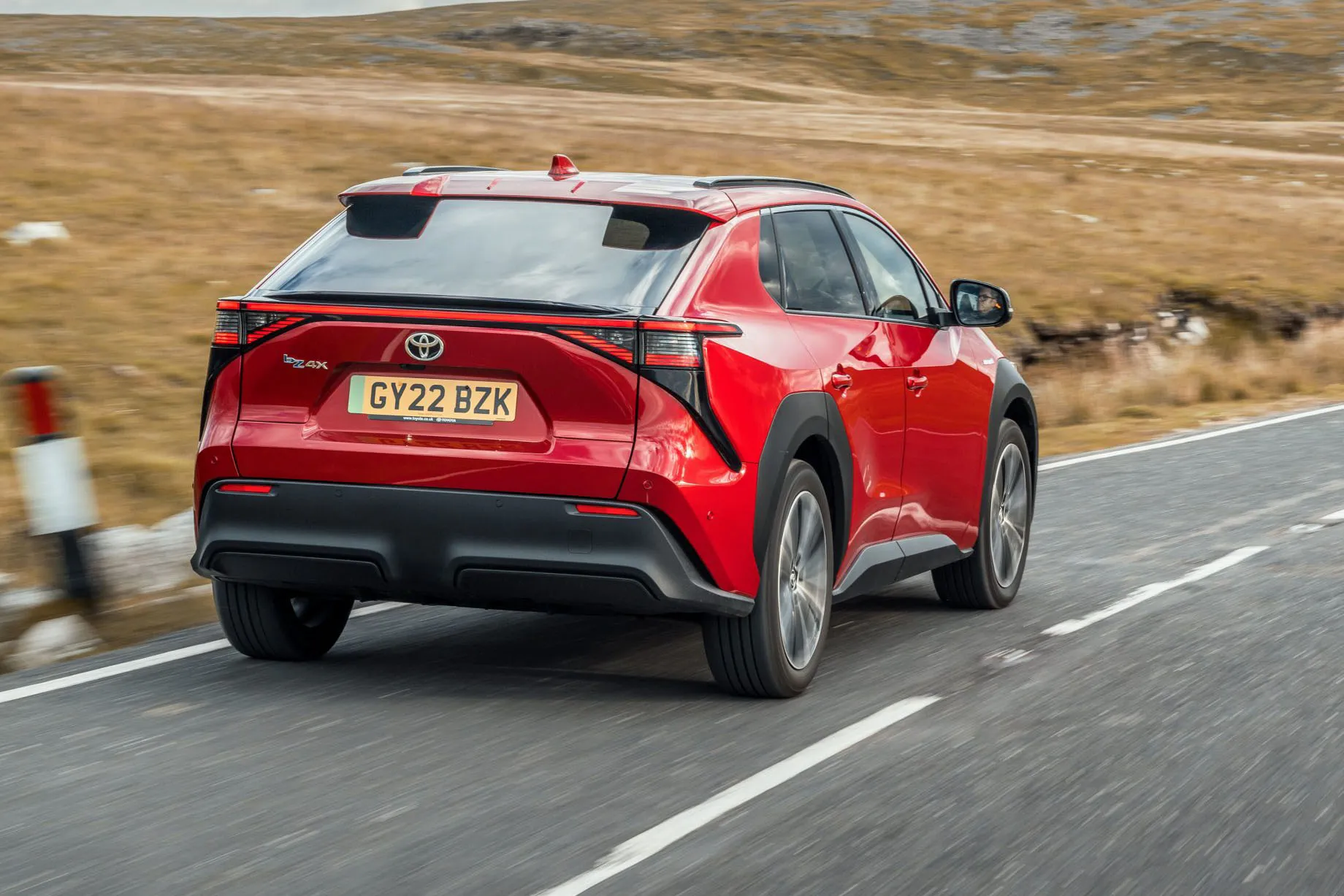
Like many modern electric SUVs, the Toyota bZ4X shares the characteristics of a fairly substantial kerb weight, combined with tautly sprung suspension. Where the bZ4X differs from many of its peers is how it handles these two characteristics.
The steering of the bZ4X is quick to react, with a pleasing amount of weight and consistency. There is not much in the way of driver feedback, but it creates an impression of agility beyond what would be expected from a 2,000kg SUV.
While the body and suspension of the bZ4X are stiff, this does not translate into an uncomfortable ride. On the contrary, it manages to isolate those inside from the worst bumps in the road.
AWD models come with a Subaru-developed ‘X-Mode’, which juggles power and traction to allow the bZ4X to perform surprisingly well in the mud. It can wade in water to depths of up to 500mm, too.
In the future, Toyota plans to put a version of the bZ4X into production with ‘steer-by-wire’ technology. Fitted with a yoke-style steering wheel, this would allow full lock to be achieved with just 150 degrees of rotation.
What motors and batteries are available in the Toyota bZ4X?
Toyota has kept the bZ4X powertrain options relatively simple, with buyers asked to make a choice between whether they want a front-wheel-drive or all-wheel-drive layout.
Like many electric models, the bZ4X manages to feel quick pulling away from junctions, thanks to an instant hit of torque. Higher speeds will see its rate of acceleration ebb away, though.
Front-wheel-drive versions come with a 150kW (204PS) single motor that drives the front axle. With 266Nm of torque, delivered almost instantly, the result is a potential 0-62mph time of 7.5 seconds.
Should all-wheel drive be a requirement, the Toyota bZ4X uses a pair of 80kW electric motors. This means one motor for the front axle and another for the rear wheels, giving a combined total of 160kW (218PS) and 337Nm of torque. This drops the 0-62mph time down to 6.9 seconds.
Both versions make use of the same 71.4kWh lithium-ion battery pack.
Toyota bZ4X range: How far can you travel on a charge?
The official WLTP range for the Toyota bZ4X in base-level Pure trim, with the 150kW front-wheel-drive setup, is a commendable 318 miles.
Opting for the more powerful 160kW AWD version sees this drop to a theoretical 286 miles.
The Toyota bZ4X initially came under fire due to questions about battery range. Journalists on launch events found it hard to get close to the bZ4X’s official range, which was made worse by cold conditions.
Toyota has since released updates for the bZ4X, resulting in a more accurate ‘live’ display of the car’s range when driving.
Refinement and noise levels
Like many electric SUVs, the lack of an engine makes other exterior sounds more obvious when driving the bZ4X. However, Toyota has done a decent job of suppressing tyre- and wind noise.
It means the bZ4X is a good motorway cruiser, although this is not necessarily the natural habitat for an electric SUV, due to the effect such use has on battery range.
Safety equipment: How safe is the Toyota bZ4X?
When it comes to safety, the Toyota bZ4X has gained the maximum five-star rating in Euro NCAP crash tests. This included a respectable 88 percent score for how the bZ4X protects adult occupants.
Standard safety equipment includes a host of airbags, a speed limiter with dynamic road sign assist, pre-collision warning and lane-departure warning.
Higher-specification Motion and Vision models come with adaptive high beam assistance, extended blind-spot monitoring, and front cross-traffic assist. As of the 2024 update, they also get automatic flashing rear hazard lights designed to help prevent rear-end collisions.
Charging times: How much does it cost to charge the Toyota bZ4X?
“Rapid-charging compatibility is included as standard on the bZ4X, meaning an 80 percent charge takes less than an hour.”
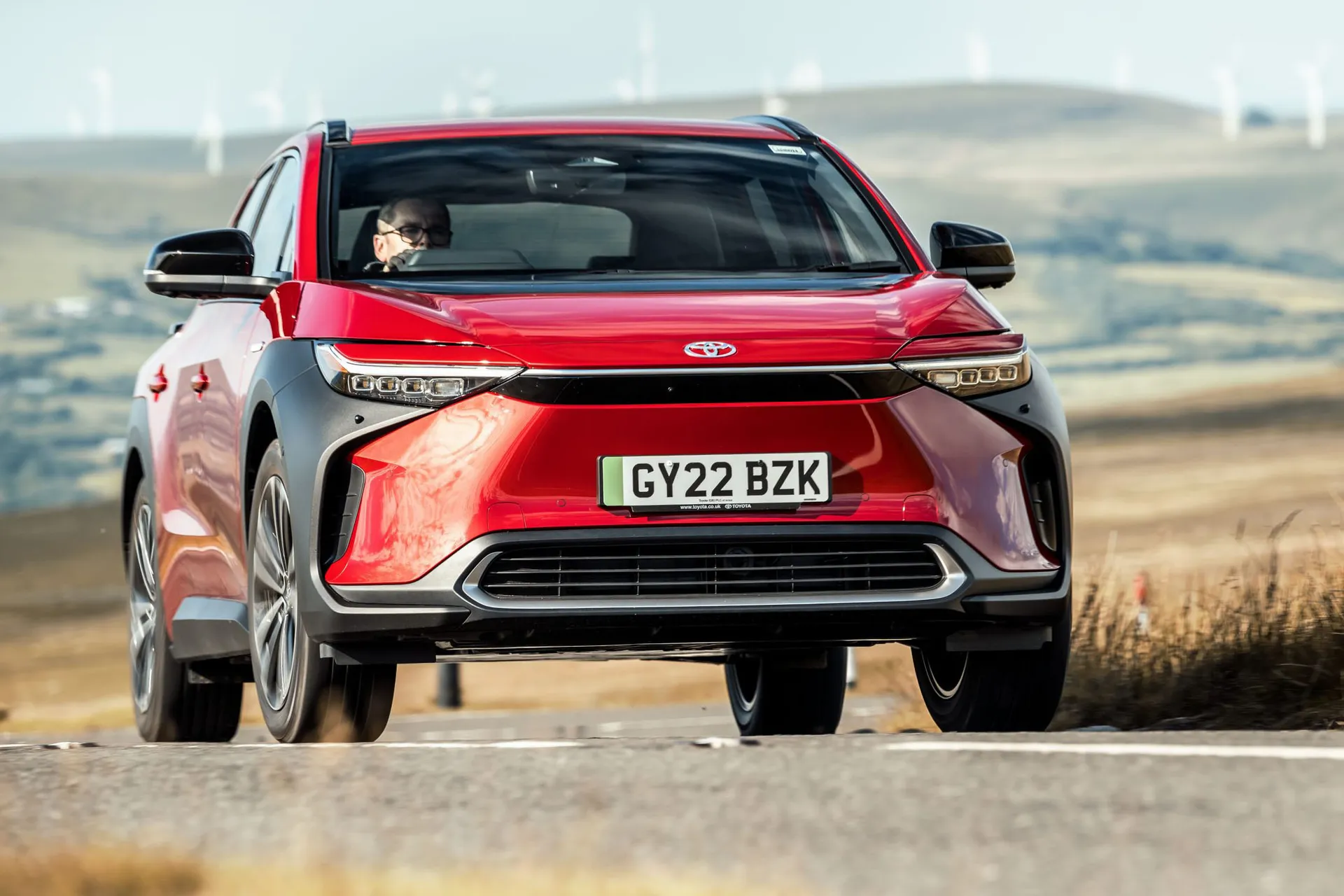
Making use of a public 150kW rapid-charging device could see the Toyota bZ4X replenished to 80 percent battery capacity in just 30-45 minutes. This ability will certainly help when it comes to managing your required range. DC rapid charging is naturally slower in colder temperatures, so in 2024, a new heat exchanger was added to speed this up.
Rapid charging is not cheap, though, usually costing around 90p per kWh for the fastest options.
For charging at home, early versions of the Toyota bZ4X came with a 6.6kW onboard charger, although this has been upgraded to an 11kW version on more recent examples.
The latter has cut the charging time using a wallbox from 11 hours down to a more respectable 6.5 hours.
Toyota guarantees that the lithium-ion battery pack in the bZ4X will still retain 70 percent of its capacity after 10 years.
Toyota bZ4X reliability and warranty
Toyota has a formidable reputation when it comes to reliability. This is borne out by the latest results of the Honest John Satisfaction Index, which saw Toyota ranked third out of 33 car manufacturers in this area.
Admittedly, the Toyota bZ4X is a very different product to Toyota's other cars, developed in a joint venture with Subaru. But so far there have been no major reports of reliability worries.
A three-year warranty is standard, but this will be extended by 12 months and/or 10,000 miles every time the Toyota bZ4X is serviced at an approved Toyota dealership, up to a maximum of ten years or 100,000 miles. A separate 10-year warranty is included for the car’s battery pack, too.
Toyota bZ4X insurance groups and costs
When it comes to insurance, the Toyota bZ4X starts from group 35 (out of 50 groups in total) for the 150kW version in Pure specification. The range then stretches to group 40 for an AWD 160kW version in Motion trim.
These are relatively insurance high ratings for an electric SUV. By comparison, a Volkswagen ID.5 starts from only group 29. Be sure to shop around to get the best possible price on your annual premium.
VED car tax: What is the annual road tax on a Toyota bZ4X?
VED road tax used to be free for electric cars, but those days are no more, so owners have to pay the same flat rate of tax as on all other cars, a rate that currently stands at £195 per year.
It gets worse. EVs used to also be exempt from the luxury car surcharge for vehicles that cost more than £40,000 when brand new, which all versions of the bZ4X do. So, on top of that £195 per year, you'll also be hit with an additional £425 per year for five years between years two and six of the car's life.
Toyota bZ4X price
“When bought brand new, every version of the bZ4X costs upwards of £40,000, and in most cases, well upwards. Right now, only one version sneaks under £45,000, in fact.”
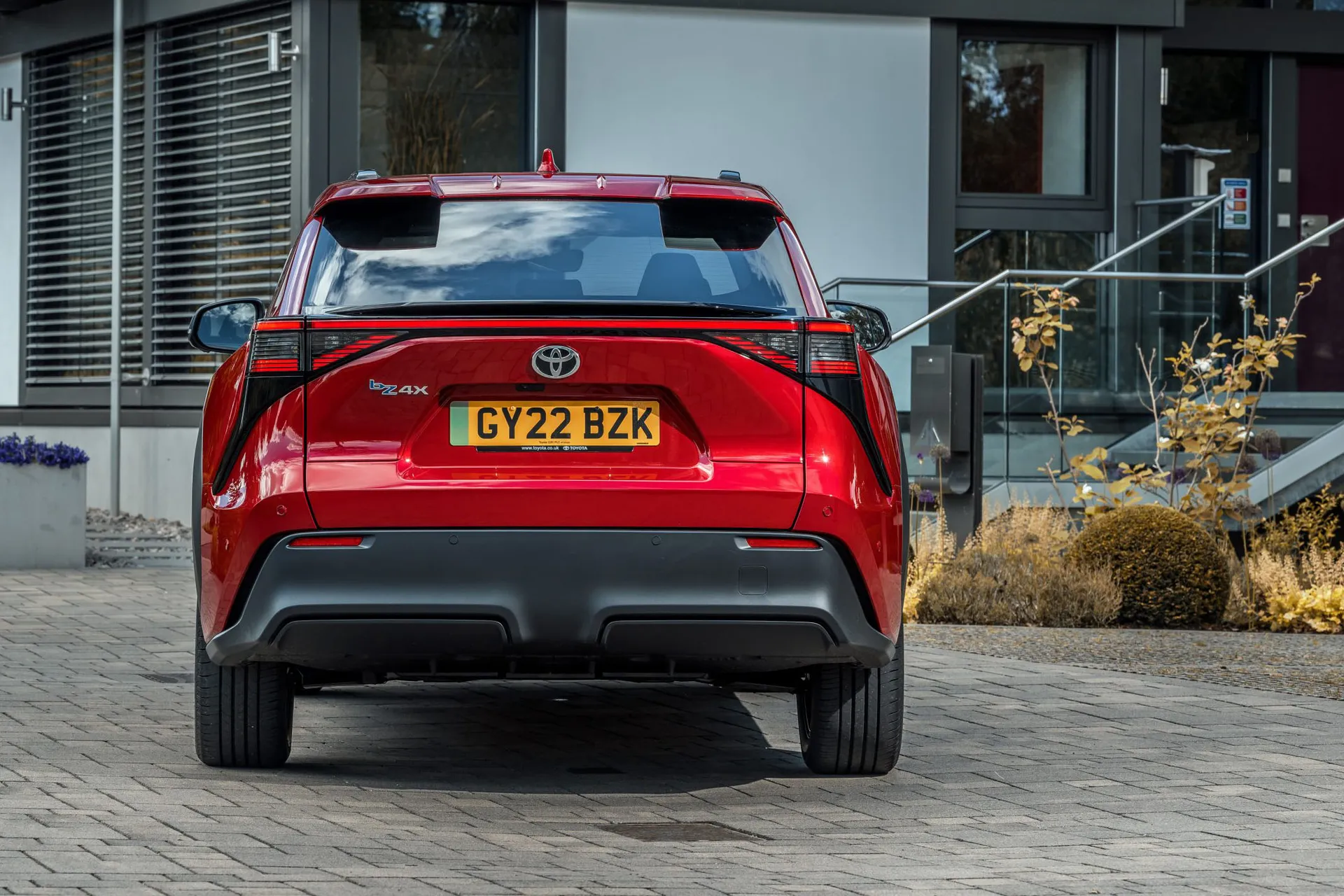
However, the car has been around long enough that here are some very handy savings to be made by buying used. The cheapest examples in the heycar listings sneak in under the £25,000 mark, and many of these aren't entry-level Pure cars, either. These will be Motion or Vision cars from between 2022 and 2024, with fewer than 10,000 miles under their wheels.
Trim levels and standard equipment
Toyota offers the bZ4X in three trim levels, all of them relatively generous in terms of standard equipment. At the bottom of the range is the Toyota bZ4X Pure, but it seems unfair to call this an entry-level choice. Included in Pure specification are 18-inch alloy wheels, LED headlights with automatic high beam and a black front grille.
A three-spoke leather steering wheel is fitted as standard, along with dual-zone climate control and an energy-saving heat pump. The seats come with manual height adjustment, plus there is also an automatically dimming rear-view mirror. Satellite navigation is included as part of the infotainment offering, with an 8.0-inch display. DAB radio, Apple CarPlay and Android Auto connectivity, and a voice recognition function are also included, along with a reversing camera, downhill assist control, lane-departure warning and autonomous emergency braking.
The Toyota bZ4X Motion adds extra equipment such as privacy glass, a rear spoiler and adaptive high-beam headlight control. A combination of black fabric and leather is used for the interior upholstery, with the driver’s seat gaining power adjustment. There is white ambient lighting, along with a surround-view camera and parking sensors. The Motion model also gains an upgrade for the multimedia system to a 12.3-inch infotainment display, along with wireless smartphone charging.
At the top of the range is the Toyota bZ4X Vision. This brings a digital smart key, 20-inch alloy wheels and synthetic leather upholstery to the party. The front seats also come with a ventilation function to keep you cool in the summer.
Ask the heycar experts: common questions
Does the Toyota bZ4X come with four-wheel drive?
What is the battery range of the Toyota bZ4X?
How long is the warranty on the Toyota bZ4X?
Get our latest advice, news and offers
Keep me updated by email with the latest advice, news and offers from heycar.
By submitting you agree to our privacy policy
